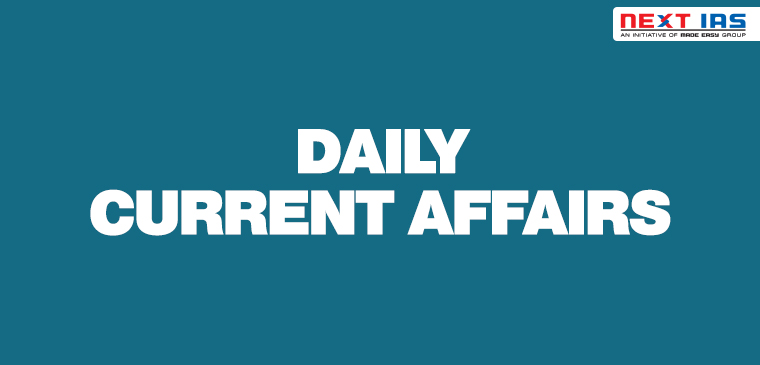
In News
Recently, NITI Aayog released SDG India Index and Dashboard 2020–21.
About
- SDG India Index and Dashboard 2020–21 was launched by NITI Aayog in 2018
- Since its inaugural launch in 2018, the index has been comprehensively documenting and ranking the progress made by States and Union Territories towards achieving the Sustainable Development Goals.
- Now in its third year (2021), the index has become the primary tool for monitoring progress on the SDGs in the country and has simultaneously fostered competition among the States and Union Territories.
- On the theme of partnerships which is central to Goal 17, it is clear that by working together we can build a more resilient and sustainable future, where no one is left behind.
- NITI Aayog has the twin mandate:
- To oversee the adoption and monitoring of the SDGs in the country,
- Promote competitive and cooperative federalism among States and UTs.
SDG India Index and Dashboard 2020–21: An Introduction to the Third Edition
- The SDG India Index 2020–21, developed in collaboration with the United Nations in India, tracks progress of all States and UTs
- On 115 indicators that are aligned to MoSPI’s National Indicator Framework (NIF).
- The process of selecting these 115 indicators included multiple consultations with Union Ministries. Feedback was sought from all States and UTs and as the essential stakeholder and audience of this localisation tool, they played a crucial role in shaping the index by enriching the feedback process with localised insights and experience from the ground.
- The SDG India Index 2020–21 is more robust than the previous editions on account of wider coverage of targets and indicators with greater alignment with the NIF.
- The 115 indicators incorporate 16 out of 17 SDGs, with a qualitative assessment on Goal 17,and cover 70 SDG targets.
- This is an improvement over the 2018–19 and 2019–20 editions of the index, which had utilised 62 indicators across 39 targets and 13 Goals, and 100 indicators across 54 targets and 16 Goals, respectively.
- The SDG India Index computes goal-wise scores on the 16 SDGs for each State and Union Territory. Overall State and UT scores are generated from goal-wise scores to measure aggregate performance of the sub-national unit based on its performance across the 16 SDGs.
- These scores range between 0–100, and if a State/UT achieves a score of 100, it signifies it has achieved the 2030 targets. The higher the score of a State/UT, the greater the distance to target achieved.
- States and Union Territories are classified as below based on their SDG India Index score:
- Aspirant: 0–49
- Performer: 50–64
- Front-Runner: 65–99
- Achiever: 100
- Mizoram, Haryana, and Uttarakhand are the top gainers in 2020–21in terms of improvement in score from 2019, with an increase of 12, 10 and 8 points, respectively.
- While in 2019, ten States/UTs belonged to the category of Front-Runners (score in the range 65–99, including both) twelve more States/UTs found themselves in this category in 2020–21.
( Pic Courtesy : PIB)
- Top 5 performing states are:
|
State |
Score |
|
Kerala |
75 |
|
Himachal Pradesh, Tamil Nadu |
74 |
|
Andhra Pradesh, Karnataka, Goa, Uttarakhand |
72 |
|
Sikkim |
71 |
|
Maharashtra |
70 |
- Bottom 5 states are:
|
State |
Score |
|
Chhattisgarh, Nagaland, Odisha |
61 |
|
Arunachal Pradesh, Meghalaya, Rajasthan, Uttar Pradesh |
60 |
|
Assam |
57 |
|
Jharkhand |
56 |
|
Bihar |
52 |
Significance
- Cooperative Federalism is given a boost by the methodology of Partnership, which is also Goal 17 in SDG and theme of the Index
- It makes the environment Competitive in a healthy way, thereby making space for more growth at State levels.
- It will help keep India at par with other countries in SDG Agenda 2030.
Sustainable Development Goals (SDGs)
- The 2030 Agenda for Sustainable Development, adopted by all United Nations Member States in 2015, provides a shared blueprint for peace and prosperity for people and the planet, now and into the future.
- At its heart are the 17 Sustainable Development Goals (SDGs), which are an urgent call for action by all countries – developed and developing – in a global partnership.
- They recognize that ending poverty and other deprivations must go hand-in-hand with strategies that improve health and education, reduce inequality, and spur economic growth – all while tackling climate change and working to preserve our oceans and forests.
Way Forward
- The country’s overall SDG score improved by 6 points—from 60 in 2019 to 66 in 2020–21. This positive stride towards achieving the targets is largely driven by exemplary country-wide performance in Goal 6 (Clean Water and Sanitation) and Goal 7 Affordable and Clean Energy), where the composite Goal scoresare 83 and 92, respectively.
- With one-third of the journey towards achieving the 2030 Agenda behind us, this edition of the index report focuses on the significance of partnerships as its theme, Partnerships in the decade of Action. The report reflects on the partnerships we have built and strengthened during our SDG efforts. The narrative throws light on how collaborative initiatives can result in better outcomes and greater impacts.
Sources: PIB+TH
Previous article
Model Tenancy Act
Next article
Facts in News